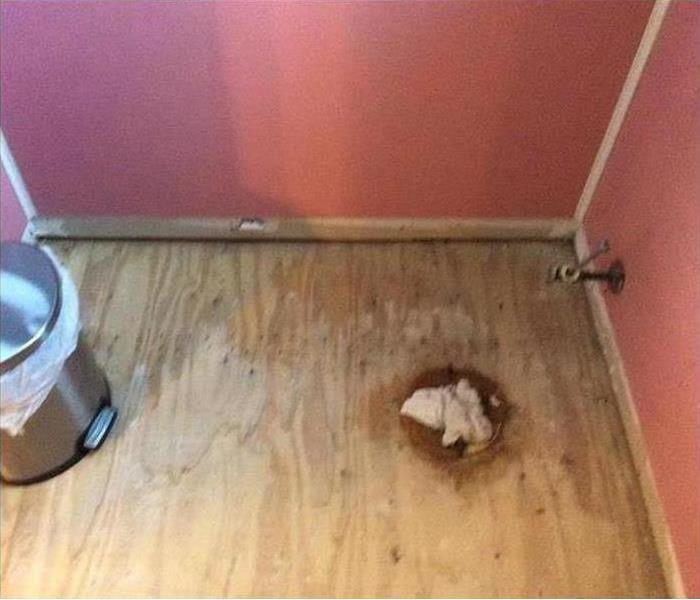How To Clean Up After an Overflow
7/27/2022 (Permalink)
How To Clean Up After an Overflow
A leaking or overflowing toilet can make a big mess in a short amount of time. It can lead to sewer damage in your floor and walls, and if it's not dealt with properly, it may even compromise the structural integrity of your home. Fortunately, sewage mitigation experts in Wildwood Lake, TN, can determine what kind of remediation you need and fix the problem quickly.
Identify the Source
Assessment starts with figuring out where the leak is coming from, which informs the rest of the mitigation process. The source of the water determines its contamination level:
- Category 1 – supply line leak
- Category 2 – overflow containing clean water or urine only
- Category 3 – overflow containing feces
The technicians from the sewage company should inspect the area for damage. A small leak of clean water may just require the replacement of a few tiles. More extensive sewer damage, however, makes multiple steps necessary.
Disinfect the Area
If the water from the flooded toilet is contaminated, the remediation team has to do more than just get rid of the moisture. Technicians remove material that isn't salvageable and use industrial cleaners to disinfect the remaining structure. Getting rid of bacteria and other contaminants helps prevent secondary damage from occurring. Once the space is clean, it must thoroughly dry before fixtures can be replaced.
Restore the Bathroom
Remediation of damage is only half the job. SERVPRO technicians make your bathroom look "Like it never even happened," by rebuilding the parts of the structure that were damaged. They match the new materials with the existing flooring so that no one can tell you had a flooding disaster. Once the toilet is reinstalled, the process is complete.
Sewer damage requires more than just mopping up the wet floor. To fully mitigate the damage, the whole area must be inspected and disinfected. A thorough cleanup prevents secondary damage and gets your home back to normal.






 24/7 Emergency Service
24/7 Emergency Service
